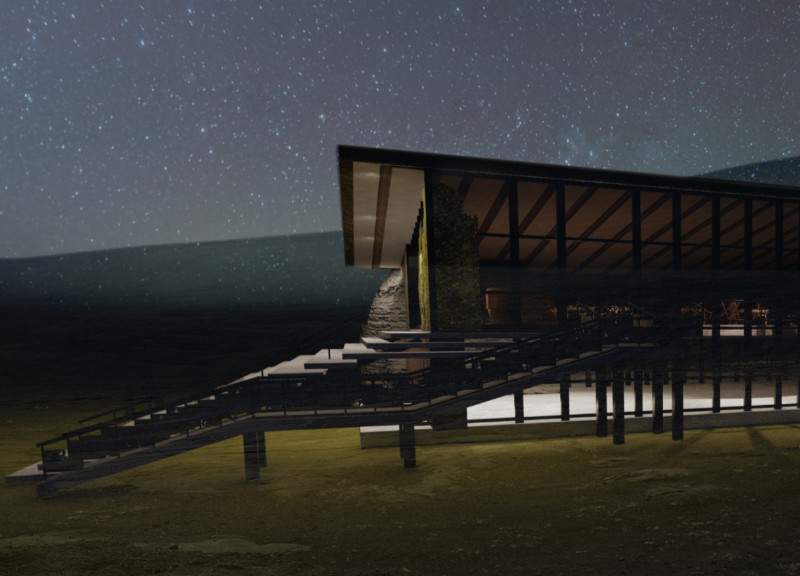5 key facts about this project
The Greenhouse Restaurant Concept at Vogafjós Farm Resort is located in the scenic Lake Mývatn region of Iceland. The setting features unique volcanic landscapes and diverse ecosystems. The design aims to create a dining space that allows visitors to connect with nature while enjoying locally sourced food. By blending elements of traditional Icelandic architecture with modern sustainable practices, the restaurant provides an inviting atmosphere that respects the natural environment.
Materials
A careful selection of materials is key to the design. Basalt, a volcanic rock found in the area, plays a central role due to its excellent insulating properties. This choice connects the building to the surrounding landscape while making it energy efficient. Triple-insulated glass is used to bring in natural light, enhancing the warmth of the dining area while helping to keep heating costs low.
Sustainability Features
Sustainability is a fundamental aspect of the design. The greenhouse section relies on geothermal energy sourced from nearby hot springs, which helps regulate temperature year-round. Green roofs, common in Icelandic architecture, provide additional insulation and support local plant life. This feature allows vegetation to grow on the building's surface, promoting ecological diversity and environmental awareness.
Spatial Organization
The layout of the restaurant is designed to improve the visitor experience. The dining area offers clear views into the greenhouse, allowing patrons to observe the growing processes. This design choice encourages a connection between diners and their food source. Learning about food cultivation enhances appreciation for sustainability and local farming practices.
Accessibility and Engagement
Attention to accessibility is evident throughout the design. Ramps and thoughtful pathways make it easy for everyone to navigate the space. This focus ensures that all visitors can enjoy the surrounding beauty of Lake Mývatn while dining. The blend of indoor and outdoor areas invites guests to experience the local environment fully.
Overall, the design promotes a welcoming atmosphere where natural light, local vegetation, and earthy materials create a comfortable setting while allowing visitors to engage with Iceland’s remarkable landscape.






















































